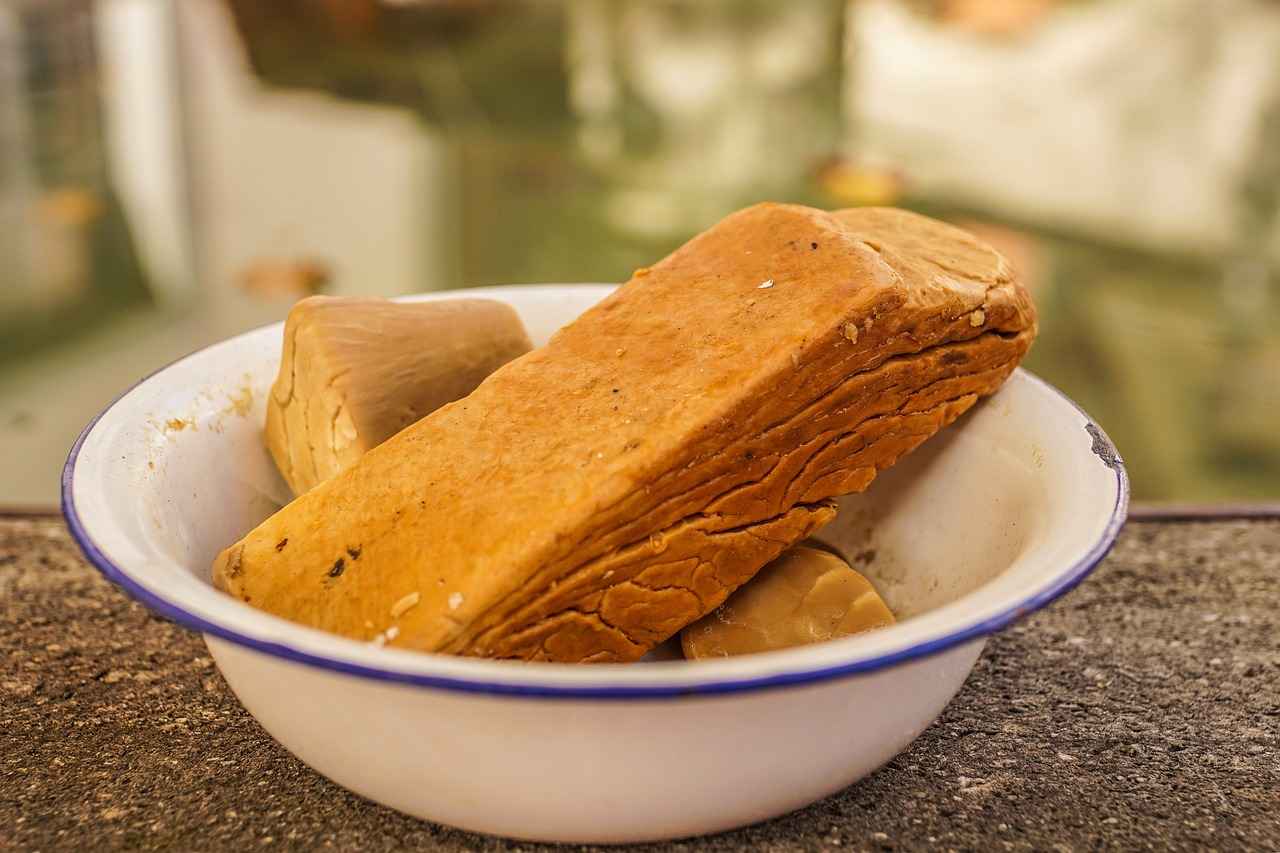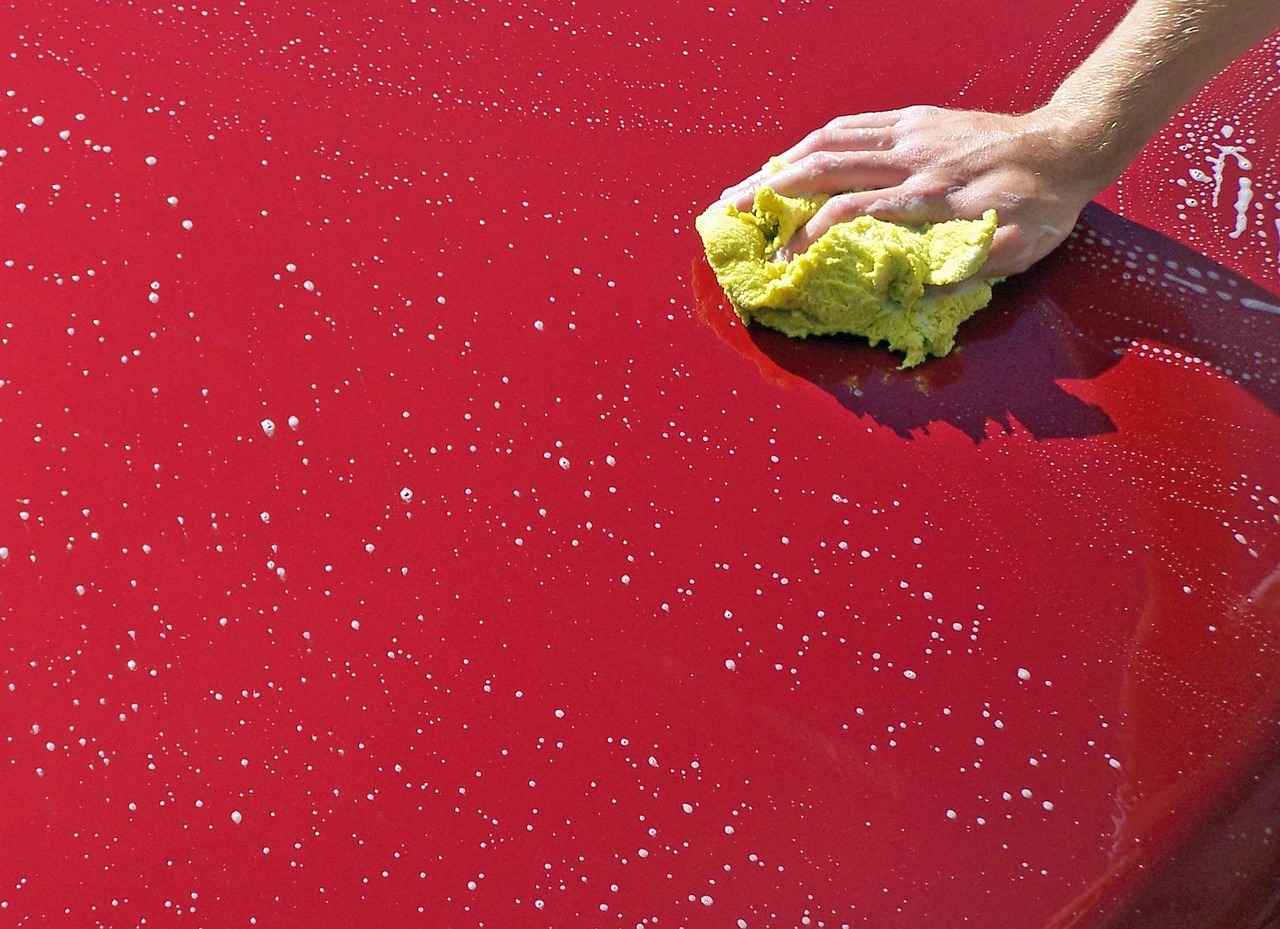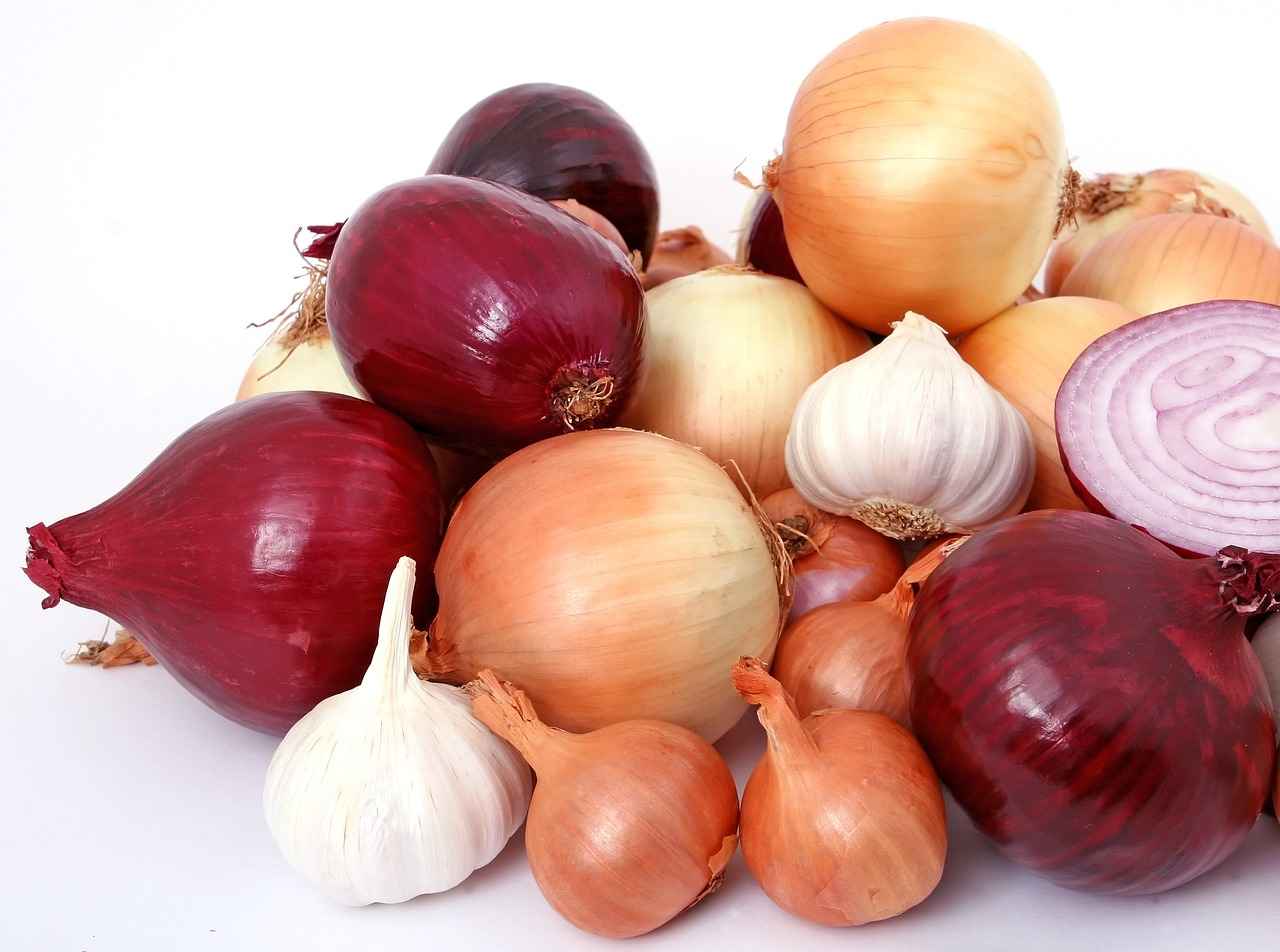This article provides a comprehensive guide on effectively cleaning your vegetable chopper, ensuring it remains in excellent condition for all your culinary needs. A well-maintained chopper not only enhances your cooking experience but also promotes food safety and hygiene.
Understanding the Importance of Cleaning
Regular cleaning of your vegetable chopper is essential for maintaining hygiene, functionality, and longevity. Food residues can harbor bacteria, which poses health risks. A clean chopper ensures that you can prepare meals efficiently without cross-contamination.
Gathering Your Cleaning Supplies
Before starting the cleaning process, gather the following essential supplies:
- Warm water
- Dish soap
- Soft sponge or cloth
- Small brush for hard-to-reach areas
- Vinegar or baking soda (for natural cleaning)
Recommended Cleaning Products
Explore the best cleaning products for your vegetable chopper, including:
- Non-toxic dish detergents
- Natural alternatives like vinegar and baking soda
- Commercial cleaners designed for kitchen appliances
Step-by-Step Cleaning Process
Follow these detailed steps for an effective cleaning routine:
- Disassembling the Vegetable Chopper: Carefully take apart your chopper, ensuring you keep track of all components.
- Cleaning Each Component: Use warm, soapy water to clean the blades, container, and other parts. Pay special attention to nooks and crannies.
- Drying and Reassembling: Thoroughly dry each part before reassembly to prevent rust and ensure longevity.
Maintenance Tips for Longevity
To extend the life of your vegetable chopper, consider the following maintenance tips:
- Clean after each use
- Store in a dry place
- Inspect for damages regularly
Common Mistakes to Avoid
Avoid the following pitfalls to ensure optimal maintenance:
- Using abrasive cleaners
- Neglecting to dry components
- Forgetting to clean the blades thoroughly
When to Replace Your Vegetable Chopper
Knowing when to replace your vegetable chopper is essential for kitchen efficiency. Signs that it’s time for a new appliance include:
- Visible wear and tear
- Decreased performance
- Difficulty in cleaning
By following these guidelines, you can ensure that your vegetable chopper remains a reliable tool in your kitchen for years to come.

Understanding the Importance of Cleaning
Regular cleaning of your vegetable chopper is not just a chore; it is a vital practice that significantly impacts your kitchen hygiene and the performance of your appliance. By ensuring that your chopper is clean, you are safeguarding your food from potential contaminants and enhancing the efficiency of your cooking process.
One of the primary reasons to maintain a clean vegetable chopper is food safety. Food residues left on the blades and container can harbor harmful bacteria, which can lead to foodborne illnesses. A thorough cleaning routine helps to eliminate these risks, ensuring that the vegetables you prepare are safe for consumption.
Moreover, a clean chopper contributes to its functionality. When food particles accumulate, they can interfere with the appliance’s performance, making it less effective at chopping and slicing. This can lead to frustration during meal preparation. By keeping your chopper clean, you ensure that it operates at its best, saving you time and effort in the kitchen.
Additionally, regular cleaning can extend the longevity of your vegetable chopper. Just like any other kitchen appliance, neglecting to clean it can lead to wear and tear, resulting in the need for premature replacement. By investing a little time in maintenance, you can enjoy your vegetable chopper for many years to come.
In conclusion, the importance of cleaning your vegetable chopper cannot be overstated. It plays a critical role in maintaining hygiene, ensuring functionality, and enhancing the longevity of your appliance. Adopting a regular cleaning routine will not only improve your cooking experience but also contribute to a healthier kitchen environment.

Gathering Your Cleaning Supplies
When it comes to effectively cleaning your vegetable chopper, gathering the right supplies is a crucial first step. Having the appropriate tools and cleaning agents at your disposal not only simplifies the process but also ensures that your chopper remains in excellent condition for future use. Below is a detailed outline of essential items you will need for this task.
- Dish Soap: A gentle yet effective dish soap is vital for removing grease and food residues. Look for biodegradable options that are safe for kitchen use.
- Baking Soda: This natural cleaner is excellent for tackling tough stains and odors. It can also act as a mild abrasive for scrubbing.
- White Vinegar: Known for its disinfecting properties, vinegar can help eliminate bacteria and odors. It’s a great natural alternative to harsh chemicals.
- Soft Sponges or Cloths: Use non-abrasive sponges or microfiber cloths to avoid scratching the surfaces of your chopper while cleaning.
- Brushes: A small brush, such as a toothbrush, can be handy for reaching into crevices and cleaning the blades thoroughly.
- Cleaning Gloves: Protect your hands while cleaning, especially when using cleaning agents or handling sharp blades.
- Drying Rack or Cloth: After washing, it’s essential to dry your chopper properly to prevent rust and maintain its longevity.
By preparing these items ahead of time, you’ll streamline your cleaning process, making it more efficient and effective. Remember that regular cleaning not only helps maintain hygiene but also extends the lifespan of your vegetable chopper, ensuring it serves you well in your culinary endeavors.
Recommended Cleaning Products
Keeping your vegetable chopper clean is essential for ensuring its longevity and maintaining hygiene in your kitchen. To achieve this, it’s important to use the right cleaning products. Below is a list of that will effectively remove food residues without damaging your appliance.
| Type | Product Name | Benefits |
|---|---|---|
| Natural Cleaner | Vinegar | Effective in cutting grease and removing odors; safe for food contact and environmentally friendly. |
| Natural Cleaner | Baking Soda | Acts as a gentle abrasive to scrub away tough stains; deodorizes and is safe for all surfaces. |
| Commercial Cleaner | Dawn Dish Soap | Highly effective at breaking down grease; safe for plastic and metal components. |
| Commercial Cleaner | Seventh Generation Dish Liquid | Made from plant-based ingredients; non-toxic and biodegradable, making it safe for both your chopper and the environment. |
| Specialty Cleaner | Bar Keepers Friend | Ideal for stainless steel components; removes tarnish and stains while being safe for food prep areas. |
When selecting a cleaning product, always ensure it is compatible with the materials of your vegetable chopper. Natural alternatives are often recommended for those who prefer eco-friendly options, while commercial cleaners can provide a more thorough clean. Always follow the manufacturer’s instructions for cleaning and maintenance to keep your appliance in top shape.
Using Natural Cleaners
Cleaning your vegetable chopper can be a breeze when you utilize natural cleaners like vinegar and baking soda. These eco-friendly options not only ensure that your kitchen remains safe for food preparation but also help in reducing the chemical footprint on the environment.
Why Choose Natural Cleaners?
- Safe for Food Contact: Natural cleaners are non-toxic, making them safe to use on items that come into contact with food.
- Environmentally Friendly: Using ingredients like vinegar and baking soda helps minimize harmful waste and pollution.
- Cost-Effective: These common household items are often less expensive than commercial cleaning products.
How to Use Vinegar and Baking Soda:
1. Begin by disassembling your vegetable chopper.2. Rinse the parts with warm water to remove any loose food particles.3. In a bowl, mix equal parts of vinegar and baking soda to create a paste.4. Apply the paste to the blades and other components, scrubbing gently with a sponge or cloth.5. Rinse thoroughly with warm water and dry completely before reassembling.
Additional Tips:
- For stubborn stains, let the vinegar and baking soda mixture sit for a few minutes before scrubbing.
- Always ensure that all components are dry to prevent rusting.
By incorporating these natural cleaning methods, you can maintain your vegetable chopper in optimal condition, ensuring it remains a reliable tool in your kitchen. Embracing these eco-friendly practices not only promotes a healthier cooking environment but also contributes to a more sustainable lifestyle.
Commercial Cleaners to Consider
When it comes to maintaining your vegetable chopper, commercial cleaning solutions can be highly effective. These products are specifically formulated to tackle the tough residues and stains that can accumulate during regular use. Below, we explore various commercial cleaners that can help keep your kitchen appliance in optimal condition.
- Multi-Surface Cleaners: These versatile cleaners can be used on various surfaces, including the plastic and metal components of your vegetable chopper. Look for products that are safe for food contact and effective in breaking down grease and grime.
- Dishwasher Detergents: If your vegetable chopper is dishwasher-safe, using a high-quality dishwasher detergent can help ensure thorough cleaning. These detergents are designed to eliminate food particles and sanitize your appliance.
- Spray Cleaners: Convenient and easy to use, spray cleaners can quickly target specific areas of your chopper. Choose options that contain antibacterial properties to enhance hygiene.
- Foaming Cleaners: These cleaners cling to surfaces, allowing for a longer cleaning time. They are particularly effective on stubborn stains and can be rinsed away easily.
- Stainless Steel Polish: If your vegetable chopper has stainless steel components, a specialized polish can help maintain its shine while protecting against fingerprints and smudges.
When selecting a commercial cleaner, always check the label for food safety certifications and ensure it is suitable for use on kitchen appliances. This will help you maintain both the performance and appearance of your vegetable chopper, ensuring it remains a valuable tool in your culinary endeavors.
Incorporating these cleaning products into your routine will not only enhance the longevity of your appliance but also contribute to a healthier cooking environment.
Tools for Effective Cleaning
When it comes to keeping your vegetable chopper in pristine condition, the right cleaning tools can make a significant difference. Utilizing specific brushes, sponges, and cloths tailored for cleaning kitchen appliances enhances your cleaning efforts, ensuring that every nook and cranny is addressed. Below are some essential tools to consider for effective cleaning:
- Brushes: A variety of brushes can be used for different parts of your chopper. A small, soft-bristled brush is excellent for reaching the intricate areas around the blades and other tight spots. For tougher residues, a stiff-bristled brush can be used with caution to avoid scratching surfaces.
- Sponges: Choose non-abrasive sponges that won’t damage the surface of your chopper. Microfiber sponges are particularly effective at lifting grime and food particles while being gentle enough for regular use.
- Cloths: Lint-free cloths are ideal for drying and polishing your vegetable chopper. A cotton cloth or a microfiber cloth can be used to wipe down the surfaces after cleaning, ensuring no streaks or residues are left behind.
- Scrapers: For stubborn food residues, a plastic scraper can be handy. It helps remove stuck-on bits without damaging the chopper’s surfaces.
By incorporating these tools into your cleaning routine, you can maintain the functionality and appearance of your vegetable chopper for years to come. Remember that regular maintenance not only enhances hygiene but also prolongs the life of your kitchen appliance.

Step-by-Step Cleaning Process
A systematic cleaning approach is essential for ensuring your vegetable chopper is thoroughly cleaned. By following these detailed steps, you can maintain the hygiene and functionality of your chopper, ensuring it remains a reliable tool in your kitchen.
- Step 1: Disassemble the Chopper
Before you begin cleaning, ensure that the chopper is unplugged. Carefully disassemble the parts, including the blades, container, and any other removable components. This allows for a more thorough cleaning and prevents damage to the appliance.
- Step 2: Rinse Components
Rinse each part under warm running water to remove any loose food particles. This initial rinse helps to make the subsequent cleaning process easier and more effective.
- Step 3: Clean with Soap
Using a mild dish soap and a soft sponge, clean each component thoroughly. Pay special attention to the blades and areas where food can get trapped. Avoid using abrasive materials that could scratch or damage the surfaces.
- Step 4: Use a Brush for Hard-to-Reach Areas
For parts with intricate designs or hard-to-reach areas, consider using a small brush, such as a toothbrush, to ensure all food residues are removed. This is especially important for the blade assembly where food can accumulate.
- Step 5: Rinse Again
After cleaning with soap, rinse all components thoroughly under warm water to remove any soap residue. This step is crucial for ensuring that no cleaning agents remain on the surfaces that come into contact with food.
- Step 6: Dry Completely
Use a clean, dry towel to wipe down each component. Ensure that all parts are completely dry before reassembling to prevent rust and maintain the longevity of your chopper.
- Step 7: Reassemble the Chopper
Once all parts are dry, carefully reassemble your vegetable chopper. Ensure that each piece is securely in place to guarantee safe operation during use.
Following this will help ensure your vegetable chopper remains in excellent condition, ready for your next culinary adventure.
Disassembling the Vegetable Chopper
Disassembling your vegetable chopper is an important step in ensuring a thorough cleaning process. Proper disassembly not only facilitates effective cleaning but also helps prevent damage to the appliance. In this section, we will provide a comprehensive guide on how to safely take apart your chopper.
- Gather Your Tools: Before starting the disassembly, make sure you have the necessary tools at hand. A small screwdriver, if applicable, and a clean workspace are essential.
- Unplug the Appliance: Safety first! Always unplug your vegetable chopper before beginning the disassembly process to avoid any accidental activation.
- Remove the Bowl: Start by detaching the bowl or container from the base. Most models allow you to lift it off easily. If it has a locking mechanism, ensure to unlock it first.
- Take Out the Blades: Carefully remove the blades from the bowl. It’s crucial to handle them with care as they are sharp. If your model has a specific mechanism for blade removal, follow the manufacturer’s instructions.
- Detach Additional Components: Depending on your chopper model, there may be other parts such as a lid or food pusher. Make sure to remove these components as well.
- Check for Any Hidden Fasteners: Some models may have screws or clips that need to be removed. Inspect your chopper closely and use the screwdriver if necessary.
Once you have successfully disassembled your vegetable chopper, you can proceed with the cleaning of each component. Ensure that all parts are laid out clearly to facilitate easy reassembly later.
By following these steps, you can safely take apart your appliance without causing damage, setting the stage for an effective cleaning session that will keep your vegetable chopper in top shape.
Cleaning Each Component
To maintain the efficiency and hygiene of your vegetable chopper, it is crucial to pay attention to each component during the cleaning process. This section will guide you through the specific steps necessary to clean the blades, container, and other parts of your chopper effectively.
- Cleaning the Blades: The blades are the most critical part of your vegetable chopper. Start by carefully removing the blades from the chopper. Use a soft brush or sponge to gently scrub the blades with warm, soapy water. Make sure to get into the crevices where food particles may be trapped. Rinse thoroughly with clean water and dry immediately to prevent rust.
- Cleaning the Container: The container often collects food debris and stains. Fill the container with warm water and a few drops of dish soap. Let it soak for a few minutes to loosen any stuck-on food. Use a non-abrasive sponge to scrub the sides and bottom, then rinse well. If there are stubborn stains, a mixture of baking soda and water can be effective.
- Cleaning the Lid: The lid can also harbor bacteria and food particles. Wipe it down with a damp cloth and mild detergent. Pay special attention to any grooves or seals where food can accumulate. Rinse and dry thoroughly.
- Other Components: If your vegetable chopper has additional parts such as a pusher or attachments, clean these using the same method as the container. Ensure all parts are completely dry before reassembling to avoid moisture buildup.
By following these steps, you can ensure that every component of your vegetable chopper is free from food particles and bacteria, maintaining a clean and safe kitchen environment.

Drying and Reassembling
After thoroughly cleaning your vegetable chopper, the next crucial steps are drying and reassembling it properly. These steps are vital to prevent rust and ensure the longevity of your appliance. Here are the best practices to follow:
- Drying the Components:
- Use a clean, dry cloth to wipe down each part of the chopper. Pay special attention to the blades and any crevices where water might accumulate.
- For plastic components, let them air dry completely on a drying rack. This helps to eliminate any moisture that could lead to mold or rust.
- Consider using a fan or placing the components in a well-ventilated area to speed up the drying process.
- Checking for Residual Moisture:
- Before reassembling, ensure that all parts are completely dry. A simple way to check is to touch each part; if it feels cool or damp, allow it to dry longer.
- Inspect the blades closely for any signs of moisture, as this is where rust is most likely to form.
- Reassembling Your Vegetable Chopper:
- Begin by reattaching the blades carefully. Ensure they are locked in place to prevent accidents during use.
- Follow the manufacturer’s instructions for reassembly to avoid any potential damage or misalignment.
- Once assembled, give your chopper a gentle shake to ensure everything is secure before storing it away.
By following these steps diligently, you can maintain your vegetable chopper in optimal condition, ensuring it remains a reliable tool in your kitchen for years to come.

Maintenance Tips for Longevity
Maintaining your vegetable chopper is essential for ensuring its longevity and optimal performance. By following a few simple tips, you can keep your appliance in excellent condition, making meal prep easier and more efficient.
- Daily Cleaning: After each use, rinse the blades and container with warm water. This prevents food residues from hardening and makes deep cleaning easier.
- Use Mild Detergents: When cleaning, opt for gentle dish soap that won’t damage the chopper’s components. Avoid harsh chemicals that could corrode the materials.
- Dry Thoroughly: Always dry your vegetable chopper completely after cleaning. Moisture can lead to rust and mold growth, which can compromise the appliance’s integrity.
- Inspect for Damage: Regularly check the blades and other components for any signs of wear or damage. Replace any parts that are chipped or dull to maintain efficiency.
- Store Properly: Store your vegetable chopper in a dry place, and consider using a protective cover to prevent dust accumulation and accidental damage.
- Weekly Deep Cleaning: Set aside time each week for a thorough cleaning. Disassemble the chopper and clean each part individually to ensure all food particles are removed.
Additional Tips:
- Avoid soaking the chopper in water for long periods.- Use a soft brush to clean hard-to-reach areas.- Keep the chopper away from extreme temperatures.
By implementing these maintenance tips, you can significantly extend the life of your vegetable chopper, ensuring it remains a reliable tool in your kitchen for years to come.

Common Mistakes to Avoid
When it comes to cleaning your vegetable chopper, being aware of common mistakes can significantly enhance its longevity and performance. Here are some pitfalls to avoid:
- Neglecting to Disassemble: Many users skip the disassembly step, which is crucial for a thorough clean. Failing to take apart the chopper can leave food residues trapped in hard-to-reach areas, leading to bacteria growth.
- Using Abrasive Cleaners: Some individuals use harsh or abrasive cleaning products that can scratch or damage the surface of the chopper. Always opt for gentle, non-abrasive cleaners to maintain the integrity of the appliance.
- Ignoring the Blades: The blades are often the most neglected part during cleaning. It’s vital to clean them carefully to prevent rust and ensure they remain sharp for effective chopping.
- Not Drying Properly: After cleaning, if the chopper is not dried properly, moisture can lead to rust formation, especially on the blades. Ensure all parts are completely dry before reassembling.
- Using the Dishwasher Incorrectly: While some vegetable choppers are dishwasher safe, others are not. Always check the manufacturer’s instructions before placing any components in the dishwasher.
- Overlooking Regular Maintenance: Regular maintenance is key to a long-lasting appliance. Skipping routine cleaning can lead to buildup and inefficiency over time.
By being mindful of these common mistakes, you can ensure that your vegetable chopper remains in optimal condition, ready to assist you in your culinary adventures. Taking the time to clean it properly will not only enhance its performance but also ensure a safer cooking environment.

When to Replace Your Vegetable Chopper
In today’s fast-paced kitchen environment, having a reliable vegetable chopper is essential. However, even the best appliances have a lifespan. Understanding when to replace your vegetable chopper can significantly enhance your kitchen efficiency and ensure food safety. This article will explore the signs that indicate it’s time for a new appliance and offer tips on selecting the right one.
Signs It’s Time for a New Vegetable Chopper
- Frequent Breakdowns: If your chopper frequently malfunctions or requires repairs, it may be more cost-effective to invest in a new one.
- Decreased Performance: Noticeably slower chopping or inconsistent results can indicate that the blades are dull or the motor is failing.
- Visible Damage: Cracks, dents, or broken parts can compromise the safety and functionality of your chopper.
- Difficulty in Cleaning: If your chopper is hard to disassemble or has crevices that trap food particles, it may be time to upgrade to a more user-friendly model.
- Age: Generally, if your vegetable chopper is over five years old, consider replacing it, especially if you’ve noticed any of the above issues.
Choosing the Right Vegetable Chopper
When it’s time to purchase a new vegetable chopper, consider the following:
- Blade Quality: Look for stainless steel blades that offer durability and sharpness.
- Motor Power: A powerful motor is essential for efficient chopping, especially for tougher vegetables.
- Ease of Cleaning: Opt for models that are easy to disassemble and dishwasher safe.
- Size and Capacity: Choose a size that fits your kitchen space and meets your cooking needs.
- Warranty: A good warranty can provide peace of mind regarding your investment.
In conclusion, knowing when to replace your vegetable chopper is crucial for maintaining kitchen efficiency. By recognizing the signs of wear and selecting the right model, you can ensure that your culinary tasks remain smooth and enjoyable.
Frequently Asked Questions
- How often should I clean my vegetable chopper?
It’s best to clean your vegetable chopper after every use. This prevents food residue buildup and keeps your kitchen hygienic. Think of it like brushing your teeth; a little daily care goes a long way!
- Can I put my vegetable chopper in the dishwasher?
While some parts may be dishwasher safe, it’s advisable to check the manufacturer’s guidelines. Hand washing is often gentler and ensures that all components are thoroughly cleaned without risk of damage.
- What are the best natural cleaners for my chopper?
Vinegar and baking soda are fantastic natural options! They’re not only effective at cutting through grease but also safe for food contact. Just mix them up, and you’re good to go!
- How can I prevent rust on my vegetable chopper?
Ensure all parts are completely dry before reassembling your chopper. Moisture is a rust’s best friend, so a little extra care in drying can keep your chopper looking sharp for years!
- When should I consider replacing my vegetable chopper?
If you notice dull blades, cracks in the container, or frequent malfunctions, it might be time for an upgrade. A reliable chopper is essential for smooth cooking, so don’t hesitate to invest in a new one!














